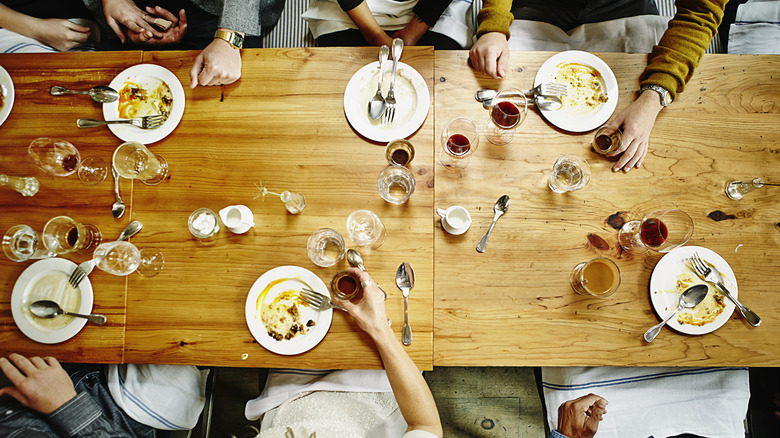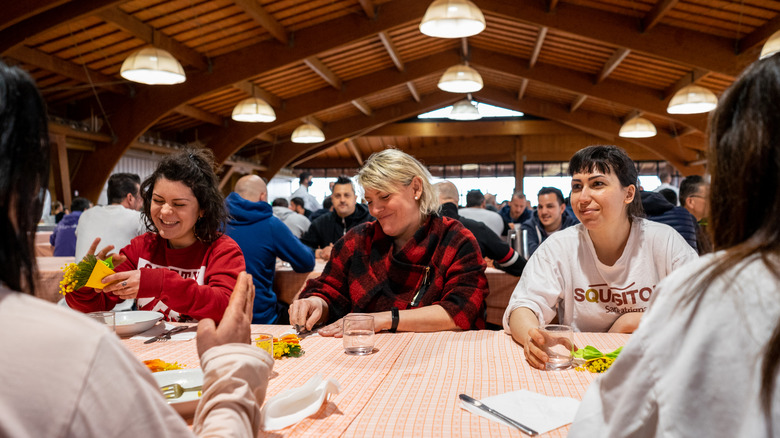At Communal Dining Tables, Everyone Is Part Of The Celebration
My roommate — a fellow journalist — landed his first full-time newsroom position three months ago. My other roommate — another fellow journalist — and I brainstormed the best way to celebrate his career milestone. We bounced between popping open a nice bottle of red, making a dinner spread, or bringing home a paper bag full of Chinese takeout. But the occasion warranted a grander celebration, so we decided to take him out to dinner.
We settled on Birds of a Feather in Williamsburg, Brooklyn, our neighborhood. It's a high-end and appropriately priced Szechuan spot — a cuisine known for its trademark spice — just one subway stop out of Manhattan. Neither of us had been before. As we neared the restaurant's window-walled exterior, we noted the ambiance: dim lights, modern and minimalist design, as well as communal dining tables. I'd sat at a number of communal dining tables before (all throughout New York City) and enjoyed the experience. It was new, thought-provoking, and forced me to find comfort in an otherwise unfamiliar experience. Walking into this restaurant, though, I was disappointed. We were there to celebrate my roommate's win — we weren't there to share the attention with other people.
But when we sat down, received our drinks, and toasted our roommate's accomplishment, those around us began asking what the occasion was. In a matter of seconds, clinking glasses inched down the long table like falling dominoes — all in celebration of my roommate landing his newsroom gig.
Communal dining tables are worth the momentary discomfort
A private dinner chef recently told me that an overwhelming amount of restaurant chefs would say they want each patron to feel like they're in their grandmother's dining room — not a restaurant. But the way restaurants are currently designed, you often feel like you're anywhere but a familiar, cozy dining room.
In the age of minimalist design taking over dining spaces — such as in cafes — these home-y feelings are as important as ever. Some may complain restaurants are too loud, some may dislike the presence of other diners nearby, but restaurants are, in their essence, public spaces. They serve to immerse their patrons not just in the fast-paced buzz of a kitchen, but in the pulse of human life as well. That's where communal dining tables come in.
Just as everyone is at the same table, everyone is on the same level — they're there to enjoy the dining experience. When sitting next to strangers, it's important to remember that you're equally a stranger to everyone around you as well. You don't stand out like a sore thumb, though you may feel like one. Communal dining tables make each guest a unique piece to a larger puzzle.
The communal restaurant dining room resembles the long tables that span the entire house for big-family holiday feasts. They don't necessarily force you to speak with your neighbors. But if you do, you'll often leave with the pleasant surprise a spontaneous conversation with a stranger can bring. Whether you have a conversation or not, sitting among a group of people evokes the warm, welcoming feelings that a restaurant should be facilitating.

